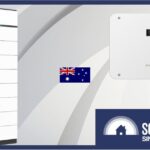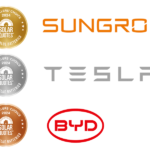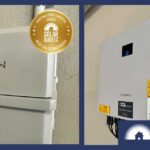Sungrow Wins ‘Best Budget Battery’: An Installer’s Reaction
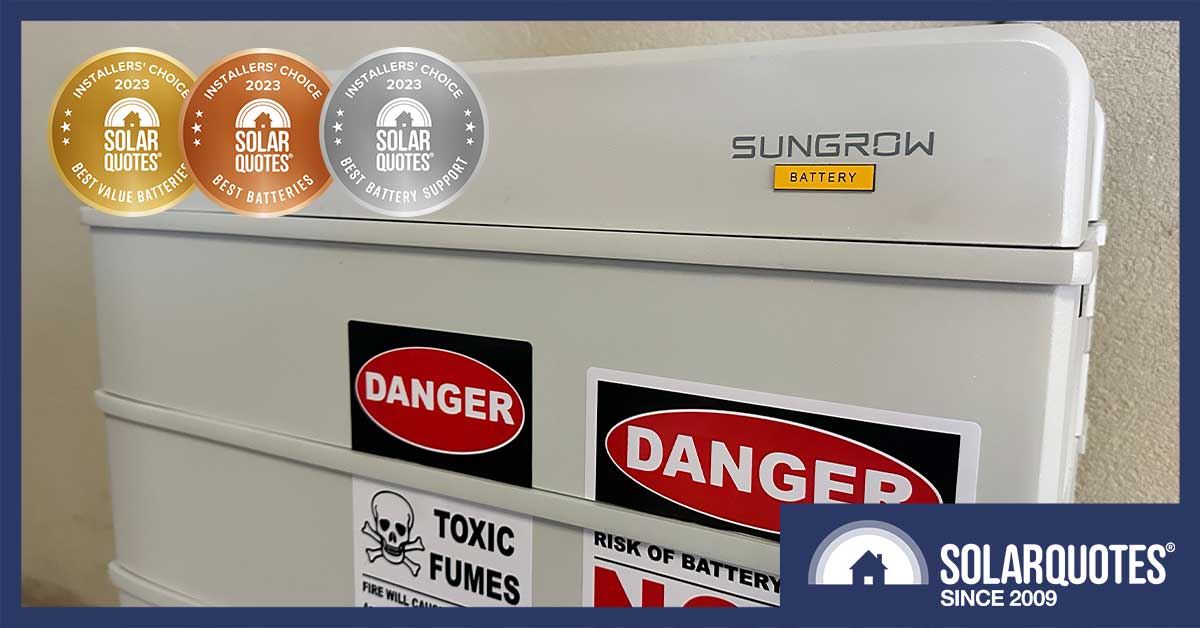
The words ‘budget battery’ strike fear into many installers’ hearts. The thought of a too-cheap battery going wrong is the stuff of nightmares.
That’s why we asked installers in our annual Installers’ Choice Awards which battery they’d install on their own home if money was tight and “every dollar counts”. We wanted to know which batteries offered great value without sacrificing quality.
This year, Sungrow won the ‘Best Budget Battery’ award, came second in ‘Best Battery Support’ and came third in the ‘Best Home Battery in 2023‘ category; behind more expensive offerings from Tesla and BYD. Here’s why installers like me – with years of experience installing batteries – rate the Sungrow home battery (with accompanying Sungrow hybrid inverter) as a great value option for Australian homes.
Sungrow Has Come Of Age
Sungrow has supplied inverters in the Australian market for 10 years. They now offer solid solutions for hybrid solar and battery systems.
I used the first generation of low-voltage (48v) hybrid inverters and they always met expectations; provided expectations were as modest as the inverter specifications. We installed them for early adopters who monitored the performance of their GCL batteries closely.
The New High Voltage Hybrid Battery System
We can’t really separate the inverter from the battery in a hybrid, since it’s the inverter that does the bulk of the work and has a vast array of features and limitations.
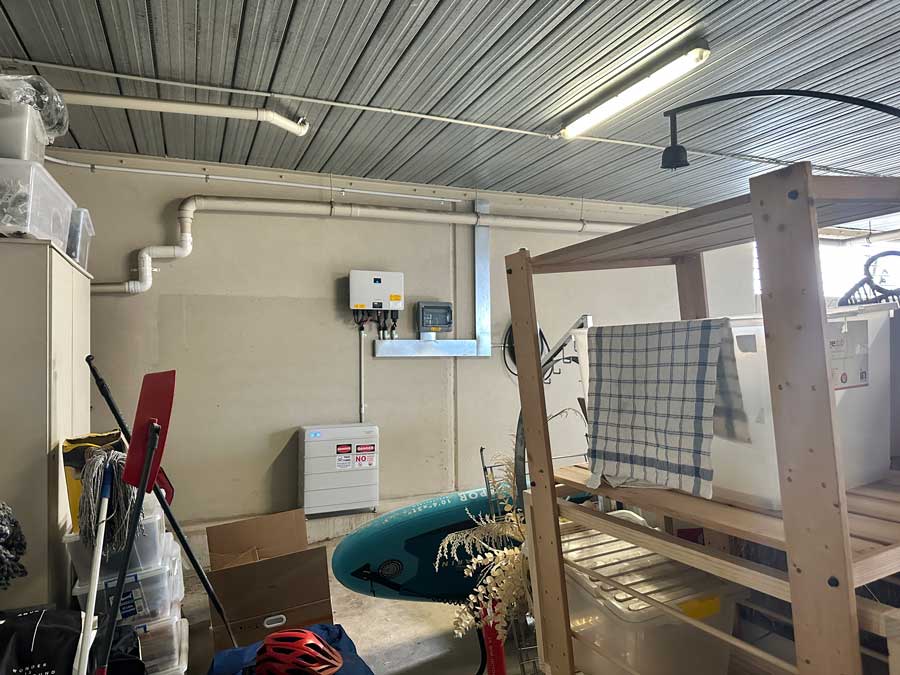
A Sungrow hybrid inverter and battery in its natural environment: an Australian garage.
The battery, in comparison, is simpler. Unlike the low-voltage 48v units, the new solutions from Sungrow now use high-voltage batteries of their own manufacture, (as well as LG Chem and BYD).
Starting with a minimum three 192v 3.2kWh nominal bricks, they can accept stacks of eight bricks, (up to 25.6kWh per stack) with further expansion of up to four parallel stacks. That’s over 100kWh of storage.
One advantage of higher voltage comes is lighter cables and lower current, so the batteries can be placed further away from the rest of the electrical installation if needed. This helps to meet the strict battery location rules of Australian Battery Installation Standard AS/NZS 5139.
Sungrow Battery Warranty Is Better Than Most
While QCells offer two more years than almost anyone else, Sungrow’s warranty is the industry standard 10 years. After 10 years you should have at least 60% capacity left.
The warranty is for 10 years or a maximum throughput of kWhs stored and discharged- whichever comes first. The throughput warranty on the Sungrow battery is high enough that – if you cycle it once per day – it won’t exceed its throughput limit before the 10 years is up; unlike many other batteries.
Battery Stackability Is Well Executed
Something Sungrow has got right: the simple modularity of the battery. It’s not a monolith that weighs more than a member of the install team. The individual blocks come in individual boxes that can be handled by individual workers. You just level up the base and start stacking them together, with the connections being made seamlessly and quickly, without any potential mistakes from the hungover apprentice. The circuit breaker slides in, the terminations are simple, the lid goes on, and the whole package is weatherproof.
We’ll have a Sungrow battery installation video (from Finn’s recent install) on the SolarQuotes YouTube channel soon that shows the easy battery stacking in all its glory.
I think BYD is the only other brand that approaches this ease of upgrade. GoodWe batteries, for example, do not; so you may be stuck with the upgrade problems of a monolith battery despite the modular appearance.
Sungrow Batteries: Bang For Buck
Most good installers I know offer a two or three-tier product range. It might be Fronius, Enphase or Solar Edge for the top shelf, but increasingly they are offering Sungrow as the less expensive option in deference to anything else.
I mention a third tier because often you need a properly cheap and cheerful unit for a basic replacement; on a basic pensioner’s house for instance.
Sungrow has progressed out of that suspiciously good value bracket to become just plain good in my opinion.
Sungrow Problems
It’s not all roses. I know from first-hand experience there are problems with some Sungrow battery installations. I’ve replaced WiFi dongles that carked it without warranty. I have rung up and asked for advice on failed battery management units that had to be diagnosed and replaced. I have also seen the disquiet from other installers when they are fielding calls from curious or furious customers.
Solar hybrid technology, no matter the maker, is highly dependent on connectivity. If there is a firmware update pushed out by Sungrow that proves to have some glitches, there can be chaos – with units needing to be switched off, reset, or just showing errors.
It’s something that will be better sorted I’m sure, but it’s not been bulletproof so far. The thing is it creates unnecessary angst with customers who have lost their monitoring; creating support calls that are more IT support than electrical troubleshooting.
I’d Have One On My House
At the end of the day, I wouldn’t be ashamed to own a Sungrow. And that’s high praise coming from a rusted-on Selectronic battery-inverter fanboy.
Original Source: https://www.solarquotes.com.au/blog/sungrow-battery-installer-view/




